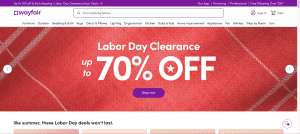
Discover the benefits of the Unilateral Pricing Policy (UPP) and how it differs from the Minimum Advertised Price (MAP).
Effective pricing strategies are crucial for maintaining profitability and brand reputation. A study by McKinsey & Company found that a 1% price increase can lead to an 8.7% increase in operating profits, highlighting the importance of well-executed pricing strategies.
The various strategies often discuss the Unilateral Pricing Policy (UPP) and Minimum Advertised Price (MAP).
UPP allows manufacturers to set a minimum resale price without reseller agreements, ensuring price consistency.
In contrast, MAP policies set the minimum price at which products can be advertised, requiring reseller agreements.
According to a survey by Wiser Solutions, 90% of brands using MAP policies saw increased pricing compliance among resellers. However, both strategies have distinct applications and implications.
UPP is often favored for its simplicity and legal safety, as it avoids antitrust risks associated with price-fixing agreements.
Conversely, MAP policies can be more flexible but require vigilant enforcement.
This article will delve into the Unilateral Pricing Policy (UPP), its significance, and how it differs from MAP.
With this guide, we help you decide which policy aligns best with your business needs.
What is Unilateral Pricing Policy (UPP)?
Unilateral Pricing Policy (UPP) is a pricing strategy where manufacturers set a minimum resale price for their products without negotiating or entering into agreements with resellers.
Unlike Minimum Advertised Price (MAP) policies involving formal agreements, UPP is purely unilateral. Manufacturers simply state the minimum price and refuse to supply any reseller who does not comply.
This approach ensures price consistency, protects the brand’s value, and reduces the risk of price erosion in the market.
For instance, companies like Apple often use UPP to maintain the premium perception of their products. By enforcing a strict pricing policy, Apple ensures that resellers cannot sell their products below the designated price, thereby preserving the brand’s high-end image.
Similarly, luxury brands like Louis Vuitton and Rolex utilize UPP to prevent their products from being discounted, which could diminish their exclusivity and desirability.
Why is a Unilateral Pricing Policy important?

UPP offers several advantages for manufacturers and resellers alike.
By setting a minimum price, manufacturers can achieve multiple objectives that benefit their business and retail partners.
1. Maintain Brand Integrity: UPP ensures that products are not sold below a specific price, preserving the brand’s perceived value.
For example, if high-end electronics or luxury goods were heavily discounted, it could tarnish the brand’s reputation for quality and exclusivity.
2. Avoid Price Wars: By preventing resellers from undercutting each other, UPP helps avoid destructive price competition.
This stability benefits all resellers by ensuring fair competition based on service and customer experience rather than price alone.
A notable example is Sony, which implements UPP to maintain consistent pricing for its popular gaming consoles, preventing retailers from engaging in price wars that could erode profit margins.
3. Enhance Retailer Relationships: Retailers appreciate the level playing field that UPP creates, as it ensures that no single retailer can gain an unfair advantage through aggressive discounting.
This fosters better partnerships between manufacturers and retailers.
For instance, Nike employs UPP to ensure that all its retail partners can compete equally, enhancing their collaborative relationships and mutual profitability.
4. Streamline Inventory Management: UPP policies help streamline inventory management and forecasting, as predictable pricing leads to more stable demand patterns.
This predictability allows manufacturers to optimize production schedules and reduce the risk of overproduction or stockouts, further contributing to operational efficiency.
UPP protects brand value, prevents price wars, and strengthens retailer relationships and operational efficiency. By maintaining price consistency, manufacturers can uphold their brand’s reputation, support their retail partners, and achieve long-term business success.
The Key Features of Unilateral Pricing Policy
Understanding the key features of the Unilateral Pricing Policy (UPP) is crucial for manufacturers aiming to maintain control over their pricing strategy.
Each feature offers specific benefits that contribute to this approach’s overall effectiveness and legality.
1. One-Way Policy
Unilateral Pricing Policy operates unilaterally, meaning manufacturers set the price without input or negotiation from resellers. This simplicity offers several advantages:
- Ease of Implementation: Manufacturers can implement pricing policies quickly without lengthy negotiations with each reseller.
- Legal Clarity: UPP is less likely to be scrutinized under antitrust laws because no agreements are involved.
This reduces the risk of legal complications that can arise from price-fixing accusations. - Control: Manufacturers retain complete control over pricing, ensuring the brand’s pricing strategy is uniformly enforced across all sales channels.
2. Advertised and Resale Prices
Unilateral Pricing Policy covers both advertised prices and actual resale prices. This dual coverage ensures consistency and eliminates confusion:
- Consistency Across Platforms: The price remains consistent whether the product is being sold online or in a brick-and-mortar store.
This prevents undercutting and maintains the brand’s value perception. - Consumer Trust: When customers see the exact price everywhere, trust in the brand’s pricing integrity is built.
They are less likely to feel they are being overcharged or maltreated. - Simplified Enforcement: Manufacturers can monitor and enforce compliance more effectively when both advertised and resale prices are covered.
This simplifies the identification of violations and streamlines corrective actions.
3. Legal Safety
Unilateral Pricing Policy minimizes antitrust risks, making it a safer option for manufacturers:
- Avoidance of Agreements: Since UPP does not involve formal agreements with resellers, it avoids the legal pitfalls of price-fixing.
This unilateral approach is typically considered lawful under U.S. antitrust laws. - Reduced Legal Scrutiny: By steering clear of mutual pricing agreements, manufacturers can reduce the likelihood of attracting regulatory scrutiny or facing legal challenges.
- Clear Guidelines: The straightforward nature of UPP provides clear guidelines for both manufacturers and resellers, reducing ambiguities that could lead to legal issues.
Those critical features of the Unilateral Pricing Policy collectively offer a robust framework for manufacturers to control pricing, maintain brand integrity, and avoid legal complications.
How To Implement Unilateral Pricing Policy
Implementing UPP requires careful planning and execution. Here are vital steps to ensure effective implementation:
1. Planning and Drafting
Develop a comprehensive plan that aligns with your brand’s long-term goals. Ensure all internal stakeholders are committed to the policy to avoid conflicts.
2. Communication
Communicate the policy to all resellers before implementation. This ensures understanding and compliance, reducing potential conflicts.
3. Enforcement
Appoint a policy administrator to handle enforcement and address reseller queries. Continuous monitoring is crucial to ensure adherence and address violations promptly.
What is the Minimum Advertised Price (MAP)?
Minimum Advertised Price (MAP) policies are a strategic tool manufacturers use to control the lowest price at which resellers can advertise their products.
This policy helps maintain brand value and ensures fair competition across various sales channels.
Unlike the Unilateral Pricing Policy (UPP), MAP policies require agreements between manufacturers and resellers, often linked to cooperative advertising funds.
If you want to know more extensively what MAP is, read here
How MAP Policies Work
MAP policies set a floor price for advertisements, meaning resellers cannot promote the products below this price, although they can sell at any price they choose:
Advertising Restrictions: Resellers must adhere to the minimum price when advertising, including online ads, print ads, and promotional flyers. This ensures that the advertised price aligns with the brand’s pricing strategy.
Sales Flexibility: While the advertised price is controlled, resellers retain the flexibility to sell the product at any price in-store or through direct negotiations with customers. This allows for some competitive pricing tactics without violating the MAP policy.
Examples of MAP Policies
Electronics Industry: Major electronics brands like Samsung and Sony use MAP policies extensively. These companies enforce MAP to ensure their products, such as TVs and smartphones, are advertised at prices that reflect their premium positioning.
This practice helps maintain the perceived value and avoids price wars among retailers.
Outdoor Gear: Brands like Patagonia and The North Face implement MAP policies to ensure their high-quality outdoor products are not advertised at discount prices.
This strategy helps preserve the brand’s reputation for quality and durability, attracting customers willing to pay a premium.
How To Enforce MAP Policies
Manufacturers must actively monitor and enforce MAP policies to be effective:
- Monitoring Tools: Companies often use MAP price monitoring tools to track advertised prices across different platforms and identify violations. Tools like Pricefy can help manufacturers ensure compliance by providing real-time data on advertised prices.
- Penalties for Violations: Resellers who violate MAP policies may face reduced cooperative advertising funds, loss of supply privileges, or termination of their reseller agreement.
The Benefits of MAP Policies
MAP policies offer several advantages for manufacturers:
- Brand Protection: By controlling advertised prices, manufacturers can protect their brand’s perceived value and avoid devaluation through excessive discounting.
- Fair Competition: MAP policies create a level playing field for all resellers, ensuring that larger retailers cannot use aggressive discounting to outcompete smaller ones.
- Enhanced Retailer Relationships: Cooperative advertising funds and clear pricing guidelines foster more robust partnerships between manufacturers and resellers.
The Differences Between UPP and MAP
While both UPP and MAP aim to control pricing, their operational mechanisms and implications differ significantly:
1. Agreement Nature:
UPP: No agreements with resellers; purely unilateral.
MAP: Involves agreements and negotiations with resellers.
2. Enforcement:
UPP: Manufacturers refuse to supply non-compliant resellers.
MAP: Non-compliance can result in loss of cooperative advertising funds.
3. Price Coverage:
UPP: Controls both advertised and resale prices.
MAP: Only controls advertised prices, not the actual selling price.
Conclusion
Choosing between UPP and MAP depends on your business model and goals.
UPP offers greater control and simplicity, making it ideal for maintaining brand integrity and legal safety.
Conversely, MAP provides flexibility for resellers but involves more complex enforcement and legal considerations.
UPP is often the better choice for businesses seeking streamlined pricing control and minimal legal risks.




